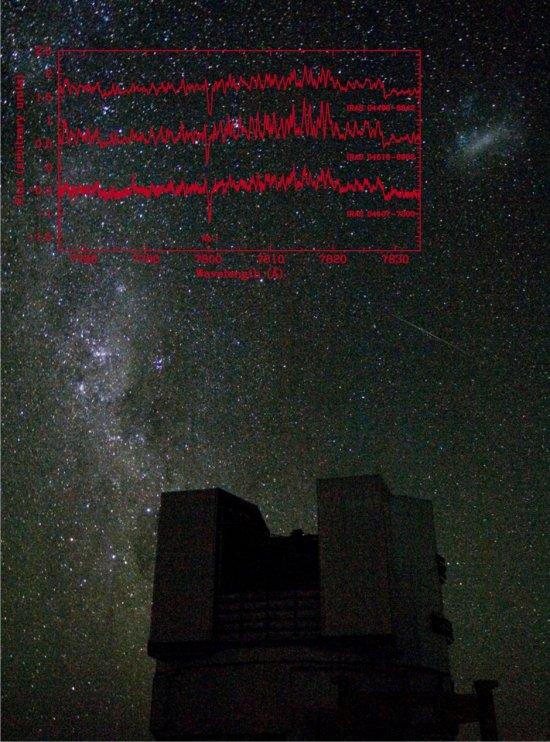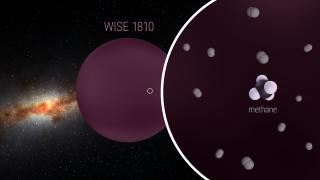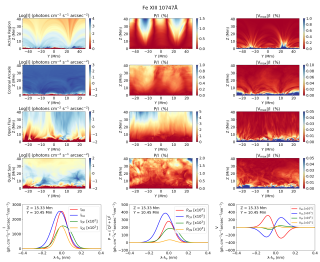We have identified for the first time extragalactic rubidium-rich Asymptotic Giant Branch (AGB) stars in low metallicity environments such as the Magellacnic Clouds.
AGB stars are the late stages in the evolution of low- and intermediate mass (1-8 solar mass) stars, when they develop thermal instabilities in the He-burning shell and suffer extreme mass loss. Thus, AGB stars are a principal contributor to the enrichment of the interstellar medium and so to the chemical evolution of galaxies, being fantastic laboratories to test the theory of stellar evolution and nucleosynthesis. The more massive AGB stars (~4-8 solar mass) differ from the lower mass (~1-4 solar mass) AGBs due to the genuine nucleosynthesis (the so-called sprocess) that characterise both type of stars. In particular, high mass AGB stars form different elements and isotopes than lower mass AGB stars and Supernovae.
Rubidium is a key element to distinguish between high mass AGB stars and low mass AGBs or other type of astronomical objects such as massive red supergiant stars. Theoretically, high mass AGBs are predicted to produce a lot of Rb. Thus, the detection of this element in large quantities can be used as a mass indicator in AGB stars. Although the existence of Rb-rich AGB stars was predicted theoretically more than 40 year ago, its observational confirmation has only been possible very recently in our Galaxy. However, the uncertainty on galactic distances (and so the star's luminosity) hamper the study of AGB stars and the comparison with the theoretical models. The Magellanic Clouds offer a unique opportunity to study the stellar evolution and nucleosynthesis of massive AGB stars in low metallicity environments where distances are known. The discovery of massive AGB stars in the MCs confirm for the first time that these stars also exist in other galaxies and that they are generally brighter than the standard adopted luminosity limit (Mbol~-7.1) for AGB stars. The observations of massive Magellanic Cloud AGBs are qualitatively predicted by the present theoretical models. However, these theoretical models are far from matching the extremely high Rb overabundances observed. This might be related with an incomplete present understanding of the atmospheres of these stars.
This work will permit the identification of massive AGB stars in other galaxies of the Local Group. The study of massive AGB stars inmetallicity environments other than solar permits to know the relationship between AGB stellar nucleosynthesis and other stellar parameters like metallicity, luminosity, stellar mass, etc. with more detail than in our own Galaxy.



